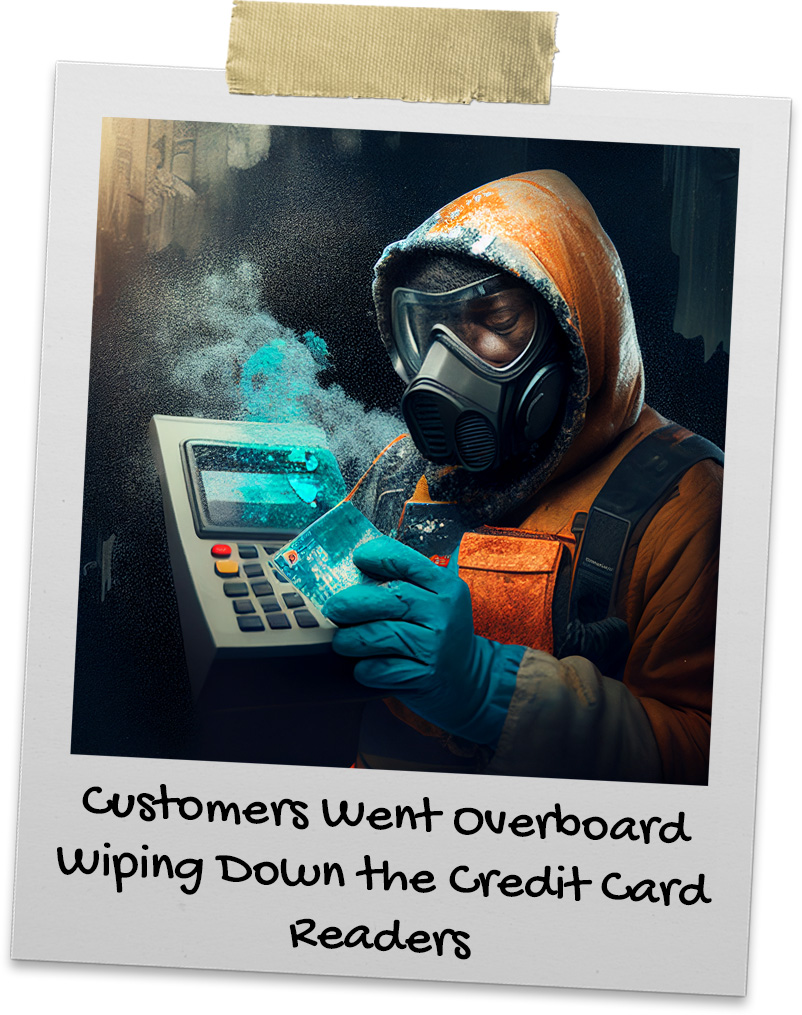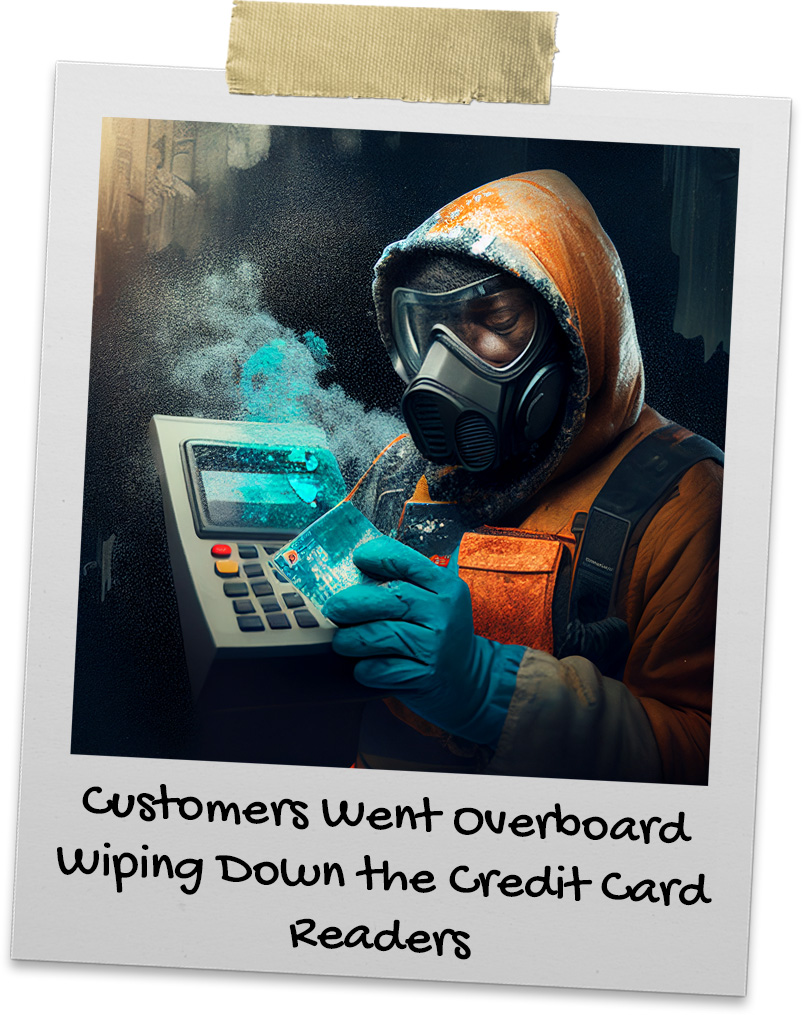Customers Went Overboard Wiping Down the Credit Card Readers


This was a sign written on piece of paper, taped to the bottom of credit card reader, at a popular local grocery store:
Attention Customers:
Please stop spraying our credit card readers with disinfectant spray. Several machines have had to be replaced. Your safety is our priority--we clean all of our machines regularly.
Thanks,
Management
During the beginning of the pandemic, there was a widespread belief that the virus could survive on surfaces for extended periods of time, including credit card readers. As a result, people started excessively spraying down credit card readers with disinfectants or cleaning agents, thinking this act would prevent them from catching the virus.
However, it was later found that the risk of transmission through surfaces is quite low, if not altogether impossible. This was especially true if people practiced good hygiene by washing their hands regularly and avoiding touching their face. The primary mode of transmission for COVID-19 was through respiratory droplets that was released when an infected person talked, coughed, or sneezed.
Still, this did not stop the emboldened few from setting their own sanitization protocols for the store or the gas pump keypads. Shoppers could be seen wiping down credit card readers with Lysol wipes, spraying them with bottles of disinfectants, and even pouring hand sanitizer directly onto the keypad.
Excessive cleaning of credit card readers damaged the machines and made them less effective or even unusable. Plus, these people were overlooking the most easy and controllable sanitization, which they could do on their own: wash your hands. It was the one thing experts said repeatedly from the beginning, and the best strategy for staying safe.



